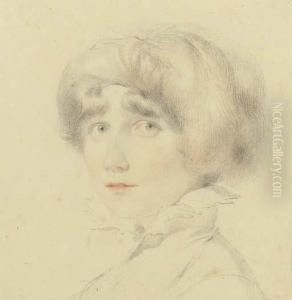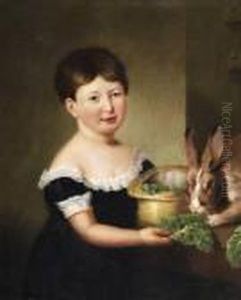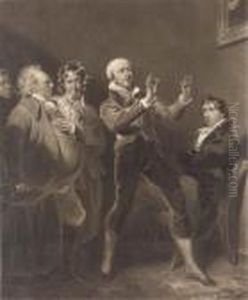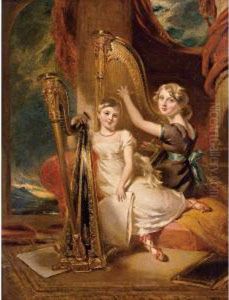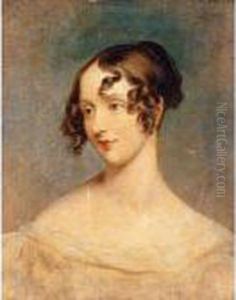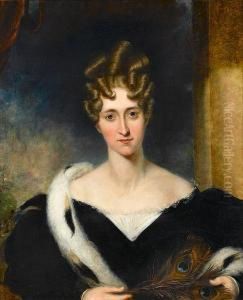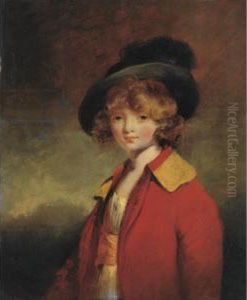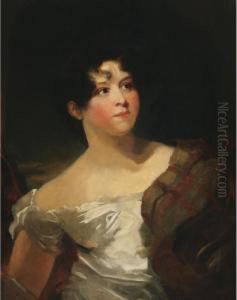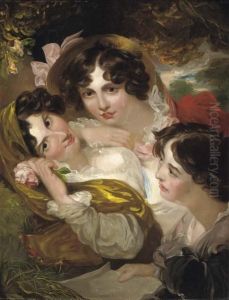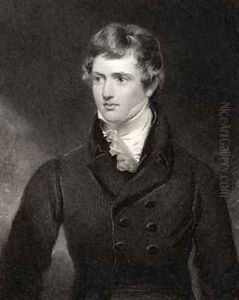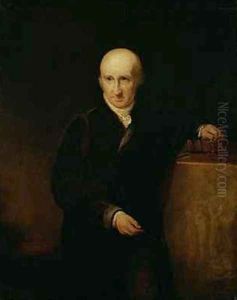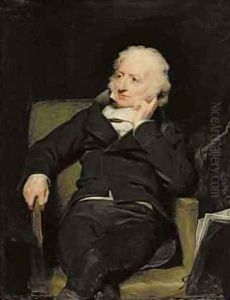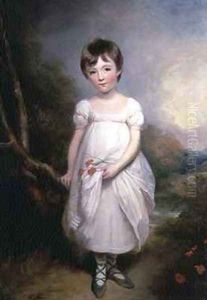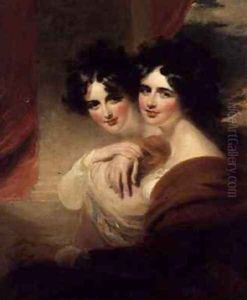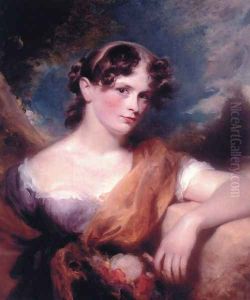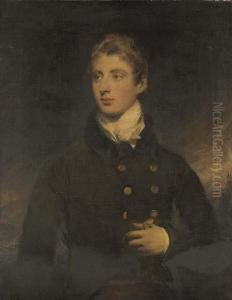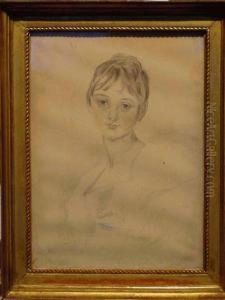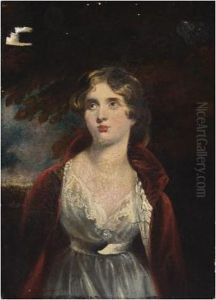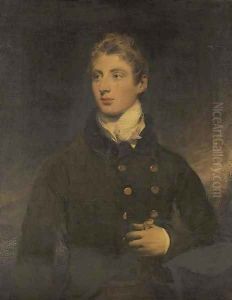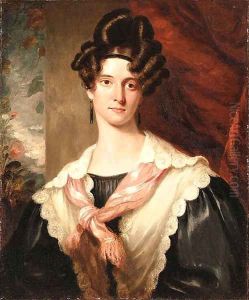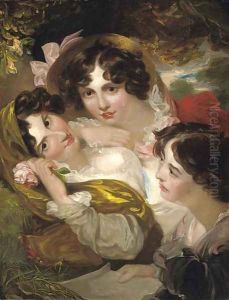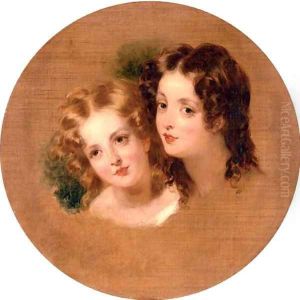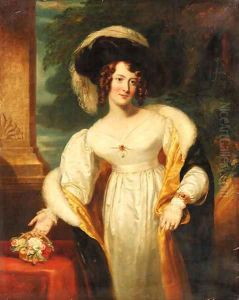George Henry Harlow Paintings
George Henry Harlow was a British painter, born on June 10, 1787, in London. He demonstrated a natural talent for art at an early age and was initially taught by his mother, a miniaturist. Harlow's career began under the tutelage of Sir Thomas Lawrence, a prominent portrait painter of the time. However, their relationship became strained, leading Harlow to continue his studies at the Royal Academy Schools, where he entered in 1803.
Harlow's early works were strongly influenced by Lawrence, but he gradually developed his own style. He became known for his portraits, which were characterized by their elegance, rich coloring, and detailed textures. Despite his talent, Harlow's career was often overshadowed by his more famous contemporaries and his reputation for being difficult to work with.
Throughout his short career, Harlow produced a number of notable works, including portraits of actors, literary figures, and members of high society. He exhibited regularly at the Royal Academy from 1804 until his death. His painting 'The Court for the Trial of Queen Katharine' is one of his most celebrated works and reflects his interest in historical subjects and his ability to portray complex group scenes with dramatic intensity.
Sadly, George Henry Harlow's career was cut short by illness. He contracted a severe throat infection, which led to his premature death on February 4, 1819, at the age of 31. Despite his brief career, Harlow left behind a body of work that continues to be appreciated for its artistry and contribution to British portraiture in the Regency era.

